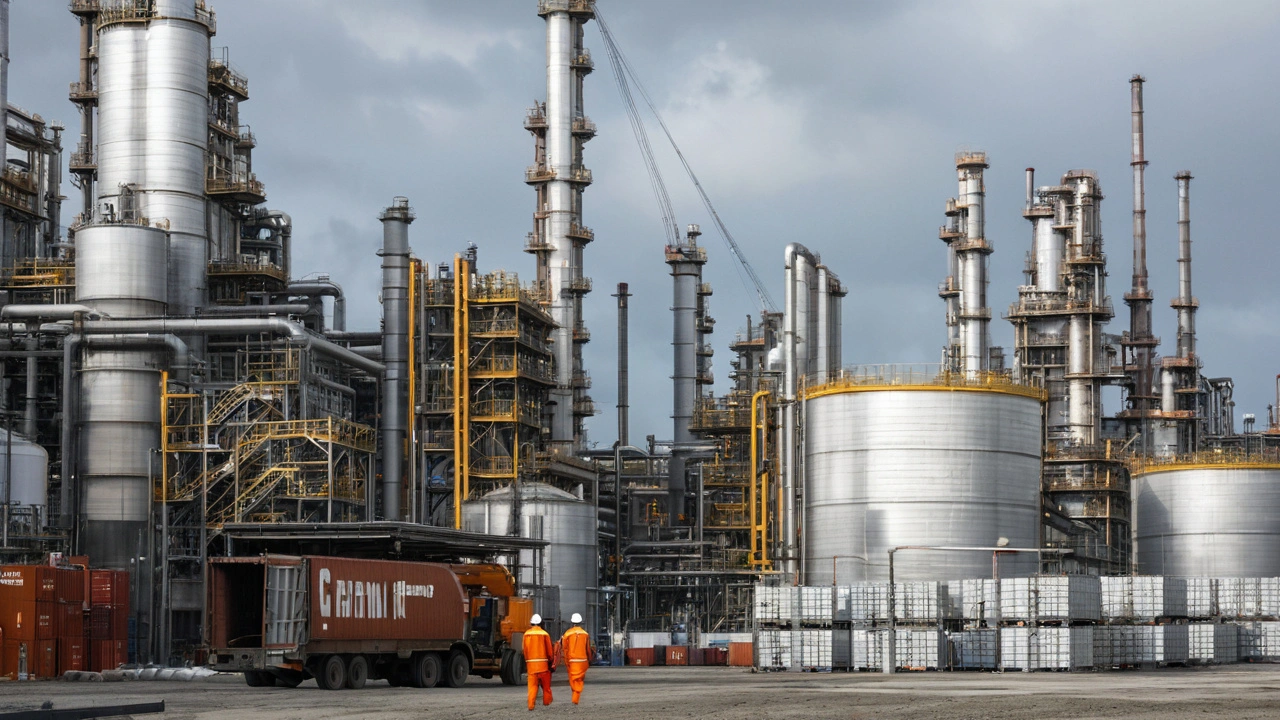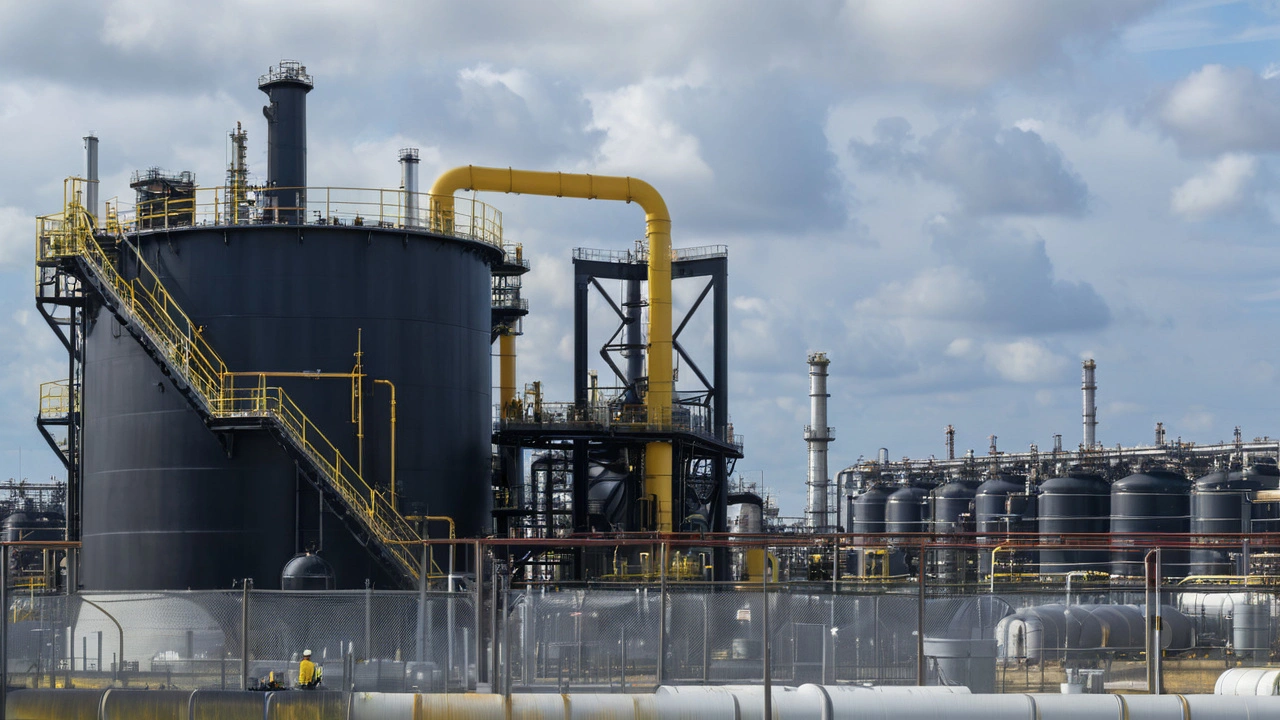Climate change is one of the most pressing issues of our time, and it is reshaping the global energy landscape in intricate ways. For decades, oil has been the cornerstone of industrialized economies, fueling everything from transportation to manufacturing. However, the rapid evolution of climate policies is starting to show its teeth, significantly influencing the dynamics of the oil market. Adi Imsirovic's examination sheds light on these transformative shifts, detailing how the oil industry is navigating this complex terrain.
The Growing Influence of Climate Policies on Oil Markets
As governments worldwide adopt aggressive climate policies, the oil industry faces an unprecedented period of transition. Policies focused on reducing carbon emissions directly affect every aspect of the market. The push for cleaner energy sources leads to a decrease in the demand for fossil fuels. This shift manifests in varied yet profound ways, ranging from influencing long-term investment decisions in oil to reshaping consumer consumption patterns.
The Shift Towards Low-Carbon Energy Sources
One of the primary outcomes of stringent climate policies is the accelerated transition to low-carbon energy sources. Renewable energy solutions, such as solar, wind, and hydro-power, are gaining traction due to their minimal environmental footprint. This shift challenges the oil industry's dominance, compelling it to innovate and adapt. Major oil companies are already investing heavily in renewable technologies and other low-carbon solutions. For instance, conglomerates like BP and Shell are diversifying their portfolios to include solar and wind energy, signaling a broader shift towards sustainability.
The implications for oil prices are extensive. As the demand for renewables increases, oil prices may experience downward pressure in the long term. However, the short-term outlook tends to be more volatile, influenced by geopolitical events and supply-demand dynamics.
The Role of OPEC and Non-OPEC Producers
The Organization of the Petroleum Exporting Countries (OPEC) remains a pivotal player in the global oil market. Traditionally, OPEC has managed oil prices by controlling production levels among member countries. This cartel's influence, however, faces challenges from both within and outside the organisation. Non-OPEC producers, exemplified by nations like the United States with its prolific shale oil production, increasingly shape market dynamics.
In light of climate policies, the interplay between OPEC and non-OPEC producers is becoming more complex. OPEC might opt to cut production to maintain high prices, creating opportunities for non-OPEC countries to ramp up their output. This response mechanism has its limitations, especially as global oil demand potentially wanes due to climate policies. Still, the market remains responsive to OPEC's decisions, indicating that the cartel's strategic maneuvers, such as production cuts or increases, will continue to have substantial implications on price trends.
Increased Production Amid High Prices
High oil prices trigger a propensity among producers to maximize their outputs to capture the financial benefits. However, it's a double-edged sword. Persistent high prices can also stymie long-term demand, as consumers and industries accelerate the transition to alternative energy solutions. The delicate balance between supply management and price stability is crucial.
Investors and oil companies, encouraged by high prices, often push for increased production. However, the expanding influence of climate policies alongside consumer shifts towards green technologies suggests that this strategy might face hurdles. The tension between high prices encouraging production and the demand being undercut by a switch to renewables forms a dynamic equilibrium that directly impacts long-term market stability.

The Interconnected Dynamics of the Dollar and Oil Prices
Another layer of complexity comes from the relationship between the dollar and oil prices. Historically, oil is traded globally in U.S. dollars, creating a symbiotic relationship. When the dollar strengthens, oil prices tend to drop because it becomes more expensive for buyers using other currencies. Conversely, a weaker dollar generally boosts oil prices. This interplay means economic policies in the United States significantly affect global oil prices.
Studies from the Federal Reserve Bank of New York and analysis by Morgan Stanley economist Lisa Shalett highlight this interdependency. Their research underscores how fluctuations in the dollar's value are a crucial variable in the oil market's equation. For instance, a robust dollar amid tightening monetary policies can reduce global oil demand due to higher costs, leading to lower prices. Alternatively, a weaker dollar can stimulate demand and push prices up.
The intersection of climate policies and economic variables results in a volatile and unpredictable market. Investors, policymakers, and market analysts must account for a myriad of factors when making decisions. It's a multifaceted puzzle where each piece, whether geopolitical developments, technological advancements, or economic policies, plays a crucial role in shaping the broader landscape.

Implications for the Future
As the world progresses towards a low-carbon future, the oil market's traditional dynamics will continuously evolve. The challenges and opportunities presented by climate policies require the industry to adapt rapidly. Investing in renewable energy, improving efficiency, and deploying innovative technologies are vital strategies for staying competitive.
The growing momentum towards sustainable practices spells an uncertain landscape for the oil industry. Yet, its intrinsic flexibility and ability to adapt have seen it through many tumultuous periods. Long-standing economic laws of supply and demand will still apply, albeit with new parameters set by climate imperatives.
In conclusion, the symbiotic relationship between climate policies and oil markets illustrates a pivotal intersection of environmental necessity and economic pragmatism. As the industry grapples with these transformative shifts, it must balance immediate fiscal goals against the long-term imperative of sustainability. Whether through adopting cleaner technologies or strategically navigating production cuts, the path forward demands innovation, resilience, and an unwavering commitment to a greener future.


Sienna Ficken
July 26, 2024 AT 22:04Oh, great, another love letter to the planet that pretends oil will just bounce back like a rubber ball after every climate policy announcement. The way governments are slashing emissions feels like they're handing the oil majors a Swiss‑army knife-except the blades are regulations. You'd think the sector would finally feel the heat, but instead they’re busy buying solar farms like they're collecting baseball cards. Meanwhile, the dollar does its usual dance, pulling oil prices up and down like a toddler on a swing. If this roller‑coaster keeps going, even the most optimistic hedge fund might need a seatbelt.
Zac Death
July 31, 2024 AT 14:41I hear you, and while the sarcasm is tasty, the reality behind these shifting policies is anything but a punchline. Oil companies have always been masters of adaptation, finding clever ways to stay afloat in turbulent seas, and now they are navigating a storm brewed by carbon caps, renewable subsidies, and a global appetite for cleaner energy. From the surface, the dip in demand looks like a simple market correction, but underneath lies a labyrinth of geopolitics, technological breakthroughs, and capital reallocations that could redraw the energy map for decades. Take OPEC, for instance, which once ruled the oil price narrative like a seasoned conductor; today it must consider not only production quotas but also the rising chorus of shale and renewable producers clamoring for their share of the spotlight. When the dollar strengthens, it squeezes oil prices, prompting producers to either cut output or gamble on higher‑margin projects, and this tug‑of‑war creates a feedback loop that keeps analysts on their toes. Meanwhile, investors are sharpening their lenses, weighing the long‑term viability of fossil assets against the accelerating cost declines of solar panels and wind turbines that were once deemed niche. The result is a portfolio reshuffle where giants like BP and Shell are sprinkling their balance sheets with green bonds and offshore wind farms, hoping that diversification will cushion the inevitable decline of pure hydrocarbon revenue. Consumers, too, are flexing their purchasing power, opting for electric vehicles, car‑sharing schemes, and even home‑grown energy solutions, further nudging the demand curve leftward. All these forces combine to produce a market that feels like it’s walking a tightrope, balancing high prices that incentivize production against policies that dampen long‑term consumption. And let's not overlook the regulatory marathon, where every new carbon price, emissions standard, or renewable mandate adds another layer of uncertainty for producers. In this environment, risk management becomes an art form, with companies hedging not just against price volatility but also against policy reversals and technology disruptions. The good news is that the very pressure that threatens traditional oil profits also fuels innovation, pushing the sector toward carbon‑capture technologies, hydrogen projects, and digital optimization of existing assets. If they can harness that ingenuity, we might see a future where oil remains a useful bridge fuel while the world sails toward a truly low‑carbon horizon. Of course, not every firm will make the pivot, and some will stumble, but the market has shown a remarkable capacity to re‑price risk and reward in real time. So, while the headlines may scream 'oil is dying,' the quieter story is one of transformation, resilience, and a scramble for relevance in a rapidly changing energy ecosystem. Bottom line: stay tuned, keep questioning, and remember that the only constant here is change itself.
Lizzie Fournier
August 5, 2024 AT 07:18It's fascinating how the energy sector is at a crossroads, and the ripple effects will be felt across every continent. We should remember that policy shifts don't just shave off demand; they also open doors for new jobs in renewables. By sharing knowledge and supporting each other's transitions, we can smooth the journey for workers and communities alike. Diversity in energy sources can be a strength, not a threat.
JAN SAE
August 9, 2024 AT 23:55Wow-what a whirlwind, folks! The oil market, the dollar, the climate agenda, all colliding, intertwining, creating a tapestry of uncertainty, and yet, opportunities sprout everywhere!!! When OPEC trims production, non‑OPEC players hustle, investors pivot, governments draft new regulations, and consumers alter behavior, the chain reaction is palpable!!! It's a perfect storm of economics, geopolitics, and technology, demanding we stay alert, stay adaptable, stay optimistic!!!
Steve Dunkerley
August 14, 2024 AT 16:32The recent macro‑economic analysis underscores the elasticity of oil demand in relation to fiat currency fluctuations, particularly the USD index. Amidst tightening monetary policy, the real effective exchange rate exerts downward pressure on global crude consumption, as import‑dependent nations confront heightened price barriers. Concurrently, the emissions intensity metric is being recalibrated, compelling upstream firms to integrate carbon capture and storage (CCS) as a risk mitigation strategy. Such multidimensional variables necessitate a robust, data‑driven forecasting model to capture the stochastic nature of price volatility.
Jasmine Hinds
August 19, 2024 AT 09:09Looks like the oil rollercoaster just got a new twist! 😅
Madison Neal
August 24, 2024 AT 01:46Indeed, the volatility curve is sharpening, and the term structure reflects a steeper risk premium in the near‑term futures market. As traders re‑price exposure, we see bid‑ask spreads widening, especially for Brent and WTI benchmarks. This dynamic, while challenging, also creates arbitrage windows for savvy participants.
John Crulz
August 28, 2024 AT 18:23Have you ever considered how the interplay between renewable subsidies and oil royalties reshapes investment horizons? The incentive structures can tilt capital allocation, making certain upstream projects appear less attractive than green infrastructure. Yet, some legacy players argue that their existing assets still hold strategic value, especially in regions where grid integration lags. It's a nuanced debate that deserves more than a headline.
Anita Drake
September 2, 2024 AT 11:00The transition we’re witnessing isn’t just about numbers; it’s about people, cultures, and livelihoods transitioning together. Recognizing the social dimension ensures that policy frameworks are equitable and that displaced workers receive retraining opportunities. When communities are engaged early, resistance wanes and collaborative solutions flourish.
Eduardo Lopez
September 7, 2024 AT 03:37Enter the stage, dear readers, where the saga of oil versus climate unfolds like an epic tragedy penned by the very hand of progress. The protagonists-titanic oil conglomerates-struggle against the inexorable rise of wind turbines that whisper promises of a cleaner dawn. Yet, the dollar, that mercurial antagonist, darts across the scene, pulling the strings of price and demand with capricious flair. As investors clutch their portfolios, they whisper prayers to the gods of ESG, hoping for redemption. The drama reaches its crescendo when policy mandates clash with market realities, igniting a firestorm of debate across boardrooms and legislatures. In this grand theater, only those who adapt their script will survive the final curtain.
Nancy Perez de Lezama
September 11, 2024 AT 20:13The analysis overlooks the practical challenges small producers face when complying with ever‑tighter emissions standards. While the rhetoric is commendable, the implementation costs could be prohibitive for many. A balanced approach is necessary to avoid unintended market distortions.
Matt Heitz
September 16, 2024 AT 12:50While striving for environmental stewardship is admirable, we must not undervalue the strategic importance of domestic oil production for national energy security. Overregulation could erode our sovereign capability, making us overly dependent on foreign imports, which is a geopolitcal risk we cannot afford.
Susan Mark
September 21, 2024 AT 05:27Adding to the earlier points, diversification into renewable assets can be pursued without sacrificing core oil operations, offering a hedge against policy volatility. Incremental investments in wind and solar projects have shown promising returns, especially in regions with favorable subsidies.
Jason Jennings
September 25, 2024 AT 22:04All this eco‑buzz feels like a distraction from the real issue: we need to keep our oil fields running to guarantee jobs and keep the economy humming.